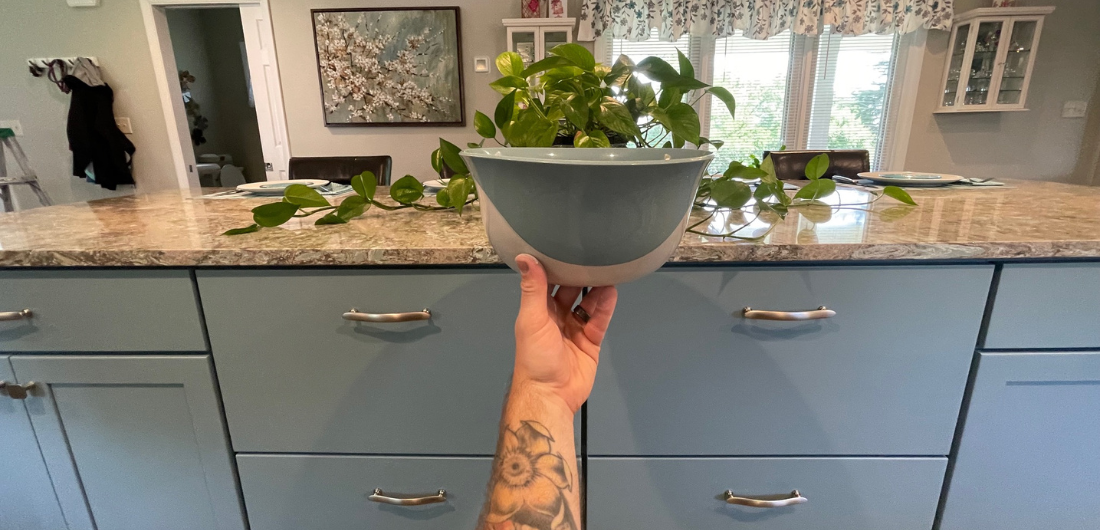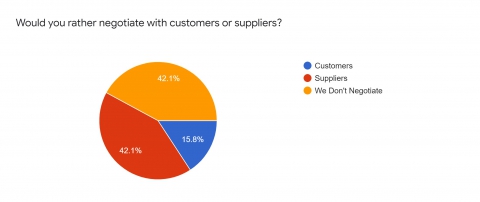Best Cabinet Coating? Maybe 1K/2K
6 April, 2023
6 April, 2023

by Curtis Tankersley
There are so many great cabinet painting blogs and websites out there these days that it will make your head spin. Is the answer for all cabinet- related questions actually out there in those spaces? Probably. But not one size fits all, and what works for some might not work at all for others. The true test comes in real-life work situations, where you have to determine what works best across an endless number of physical and environmental variables, including safety, workspace, equipment, temperature, humidity, airflow, variable substrates and, last but not least, the clock (which tends to be our worst enemy when trying to produce the best possible result that will also result in profit).
In our case, 1K/2K polyurethanes check off the most boxes for problemsolving across the widest variety of issues we encounter day to day as professional cabinet refinishers. It also produces the durable, factory-like finish that most of us have been chasing since we first picked up a spray gun (which, in my case, was 2002).
What’s so great about a 1K/2K poly?

In a nutshell, the RESULTS. We have found these products provide all the benefits of time-tested solvent-based finishes with much less toxicity/flammability, making them a great choice for occupied residential applications. The main qualities that sold us on these products include adhesion, superior durability, chemical/stain resistance, and the look and feel of something that came from a showroom. One additional hidden gem we found on yearly checkups is that despite drying rock-hard, these materials tend to flex and move with the wood, yet not crack out at the seams like similar box-store products that claim to have the same properties. This was a major selling point for Just Add Paint, as we are in the Northeast and see major swings in temperature and humidity.
What’s the difference between 1K and 2K?
Is one better than the other? 1K poly is usable straight out of the can, and 2K poly is a two part product that consists of a poly with a hardener/catalyst. 2K polys typically have greater durability and chemical resistance (I think of 2K poly as a 1K on steroids), but they have drawbacks as well. The main issue with 2K is that it has a relatively short pot life, usually around two hours. This means that you need to be extremely accurate with your knowledge of the amount of paint required for a particular project, or you are going to end up eating a LOT of time and money. This also means that spray rigs need to be cleaned out after every coat unless you are able to get your base coat to dry in less than two hours. While this does happen occasionally, it is a calculated risk that takes time to get used to.
To summarize: 1K works straight out to the can without a hardener. It is similar to a house paint in that has great adhesion, durability, and resistance to heat, moisture, stains and chemicals. This version of the product dries quickly and can be recoated quickly.
2K requires a hardener. It is more challenging to work with, as it can change from paint into a marshmallowy mess in a couple of hours. It has superior adhesion, durability, resistance to heat and moisture, and up to 85% better staining/chemical resistance compared to its 1K counterpart. This version of the product dries quickly, but it should be allowed to cure for longer periods to get full stain-blocking/chemical resistance. I recommend waiting overnight anytime it is possible.
Application
Unlike many of the traditional solvent- based cabinet coatings, 1K/2K polys can be both sprayed and brushand- rolled. Some texture will be visible when brushing and rolling, but not more so than with a typical house paint. Spray applications are also similar to working with house paint. Adding the catalyst tends to make the viscosity thicker, but like with any other product, spraying will provide the smoothest, most uniform results. Thickeners are available to help avoid sagging when spraying vertical surfaces. Please be advised there is a learning curve here, even for highly experienced spray gun operators, since cabinets require quite a bit of vertical spraying over a smooth substrate that doesn’t soak up much paint.
Potential Pitfalls
For the most part, these products are forgiving and work much like the paint we are used to applying on a daily basis. However, they can be temperamental and much more sensitive to environmental factors. Too much airflow and uneven temperature and humidity can wreak havoc on coatings that look glassy and perfect coming off the spray gun. Too much direct airflow can cause flash drying, leaving you with an unintentional faux crackle finish that will take days to correct.
We have found that minimal, indirect airflow works best to aid drying and ensure that this doesn’t happen. High heat and low humidity can also cause polys to dry too quickly and trap tiny air bubbles their way out naturally. Avoid this by spending $15 on a temperature/humidity gauge, and remember that moisture will need to be added to the air when a heat source is turned on. We have found ideal drying conditions to be 68- 72 degrees with a relative humidity of 50% or higher. (This is less of a problem in areas of the country that have consistent year-round temps, but the Northeast in particular is susceptible to this with the major fluctuations we have between summer and winter weather.)
Safety concerns — when not to use
Protective gear should be worn at all times when working with any sort of paint, especially when spraying. These types of products can be deceiving due to their low odor compared to old-school solvent-based lacquer or conversion varnish, but please remember to stay safe. 2K polys in particular contain isocyanates, which are extremely dangerous.
Many cabinet refinishing companies avoid potential exposure to customers by spraying a 1K version of the product in the house, and reserving the harsher 2K polys for use in the shop. This method of application will allow for a super durable finish on cabinet areas with the highest amount of traffic (doors and drawers) and less durability on cabinet boxes that do not get as much abuse. We recommend always erring on the side of caution with safety: Always wear long sleeves, gloves and, ideally, a full-face respirator when using these products (yes, some volatile chemicals can be absorbed through your eyes). Make sure all spray areas have good airflow for evacuating overspray out of the air as immediately as possible. Ideally, use an air scrubber with an activated carbon filter anywhere these products are being sprayed.
Resources for help
There are many cabinet painting websites and Facebook groups that pride themselves on information sharing, educating and elevating the trade. It is a welcome change for those of us who have spent years trying to learn as much as we can along the way and don’t enjoy the online trolling often associated with asking questions on trade sites. Remember to verify any and all online information, since “everyone is an expert” in these groups. The truth is, there will be a learning curve with using 1K/2K products, and most who excel with them did a lot of “on-the-job learning.”
One other resource that has been priceless to us is our product distributors. I have worked in many fields over the years and have never been exposed to a group of professionals at the top of the food chain that are so willing to exchange emails and even take direct phone calls to help solve problems.
In our case, D.C. Clark (of the famed Clark Deco, recently renamed Accessa) has been invaluable and patiently walked us through issues that could have taken us months or years to solve on our own. In fact, D.C. is currently transitioning to become even more accessible with the new company so he can help enhance the user experience, with plans to act as a liaison between the manufacturer and the user.
Stefan De Santis, from Envirolak, has been helpful as well, with everything from solving problem issues with our spray environment to finding the best type of spray system for our particular needs. And while these are the companies we interact with the most, pretty much most of these manufacturers have rock star customer service when issues arise.
Help is never far away, so don’t be afraid to dive in if you are considering taking the plunge!




We asked painters, " Would you rather negotiate with customers or…
Read Now
Comments
using a primer from Clark Deco
Clark Deco was a disaster for me. I ordered a lacquer solvent primer and was never told I needed a harder with it. We ended up spending three days striping all the primer off the cabinets. Witch caused a chain reaction of other events. the mistake cost me 6k . Would not recommend them.
Add new comment